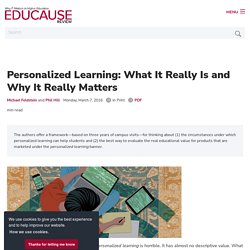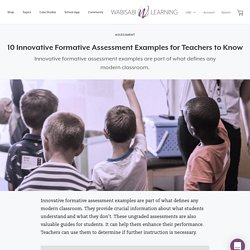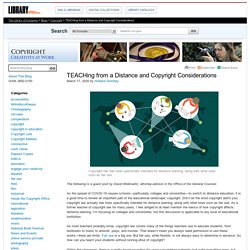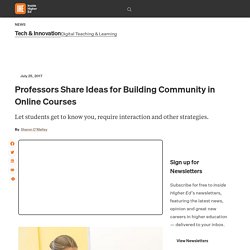

Bring Clarity to your Canvas Course Part 1: Cours... - Canvas Community. Photo by Luis Guerrero on Unsplash Hello, I am the Learning Management System Specialist in our K12 district and I provide support and instruction to our teachers and staff in the use of Canvas, promoting consistency, efficiency, and effectiveness.

When I offer Canvas instruction, or when I evaluate a teacher’s Canvas course, the first things I look for are: Is the Course Navigation menu reduced to the least possible number of links? Is the course content organized using Modules? AndDoes the course have a Home Page with links to those Modules? The value of taking a few moments to do this goes a VERY long way. In the #canvascasters podcast episode, Magnifying MasteryPaths w/ Van & Ryne, at 22:55, van.bardell and @ryne_jungling talk about the importance of consistency in course design across courses and starting by cleaning up the course navigation, and organizing content with Modules.
Bring Clarity to your Canvas Course Part 2: Modul... - Canvas Community. Bring Clarity to your Canvas Course Part 3: Home ... - Canvas Community. Differentiated Instruction in the College Classroom. One concept that higher education should borrow from K-12 educators is differentiated instruction.

This is the notion – rooted in the one-room schoolhouse – that multiple forms of learning can take place simultaneously in a single classroom. Differentiated instruction addresses differences in student preparation, interests, and strengths by offering a variety of learning pathways within the same classroom that differ in terms of content, focus, activities, or outcome. Differentiated instruction is not the same as tracking, which divides students into ability groups. Nor should it be confused with individualized instruction, since it involves team-based learning or small group activities. Differentiated instruction is an activity- or project-driven approach that divides students into teams which engage in a variety of projects, tasks, or problem-solving activities.
Differentiated instruction rests on five fundamental principles. EJ1018053. Personalized Learning: What It Really Is and Why It Really Matters. The authors offer a framework—based on three years of campus visits—for thinking about (1) the circumstances under which personalized learning can help students and (2) the best way to evaluate the real educational value for products that are marketed under the personalized learning banner.

Let's be honest: as an academic term of art, personalized learning is horrible. It has almost no descriptive value. What does it mean to "personalize" learning? Isn't learning, which is done by individual learners, inherently personal? What would it mean to personalize learning? Let's just skip to the end this time, shall we? 10 Innovative Formative Assessment Examples for Teachers to Know – Wabisabi Learning. Innovative formative assessment examples are part of what defines any modern classroom.

They provide crucial information about what students understand and what they don’t. These ungraded assessments are also valuable guides for students. It can help them enhance their performance. Teachers can use them to determine if further instruction is necessary. Using innovative formative assessment strategies consistently and effectively removes the surprises from getting final grades. Assessment for Learning in Higher Education - 5 important steps in AFL. Meeting Accessibility in Your Canvas Course: Recommendations and Resources. Studio. Copyright Resources - Canvas Community. I'm collaborating with some fantastic colleagues (hat tips to and Lily Philips - Instructional Designers) to create an AMAZING resource we'll be sharing with the community, a Quality Canvas Course Checklist (link coming soon).

A quality Canvas course abides by copyright law and takes into consideration nature of the use, nature of the work used, extent of the use, and use’s economic effect. TEACHing from a Distance and Copyright Considerations. Copyright law has tools specifically intended for distance learning, along with other tools such as fair use.

The following is a guest post by David Welkowitz, attorney-advisor in the Office of the General Counsel. As the spread of COVID-19 causes schools—particularly colleges and universities—to switch to distance education, it is a good time to review an important part of the educational landscape: copyright. Don’t let the word copyright alarm you; copyright law actually has tools specifically intended for distance learning, along with other tools such as fair use. As a former teacher of copyright law for many years, I feel obliged to at least mention the basics of how copyright affects distance learning. I’m focusing on colleges and universities, but this discussion is applicable to any level of educational institution. As most teachers probably know, copyright law covers many of the things teachers use to educate students, from textbooks to music to artwork, plays, and movies. Creativity, Copyright and Fair Use.
Ideas for Building an Online Community. Online learning, said Lynda Randall, a professor of secondary education at California State University at Fullerton, can be “a lonely enterprise if it’s just a repository of articles.”

Yet many traditional online courses, she said, are “based solely on text discussions.… That really results in an anemic learning experience.” Randall takes a different approach. She engages her online students in discussions -- with each other -- about themselves and about the coursework via video and video conferencing in an effort to create an online community in a class whose participants are unlikely ever to meet each other in person. Randall isn’t alone. As online courses become routine offerings at institutions across the world, more professors who teach them are embracing the notion that “social presence,” a concept promoted by the researchers D. Together with cognitive presence and teaching presence, social presence occurs when students can connect on a human and emotional level. Incorporate video. Diversity in Higher Education: Creating Culturally Responsive Classrooms - HIGHER ED CONNECTS.
By Melanie Forstall Lemoine, Ph.D.

For many college students, the years spent pursuing a degree can be a time of self-exploration and discovery. In order for students to get the most out of their educational career, it is important for instructors and professors to support students to the greatest extent possible. This can be done by exploring several factors that impact classroom diversity and ways to improve instruction, which include: Understanding Culturally Responsive PracticesUnderstanding Unconscious BiasUnderstanding Reflective PracticeImplementing Practices from the Framework for Improvement According to the Bureau of Labor Statistics, a report released in 2015 indicated a highly diverse cohort of college applicants.
Data from both the Bureau of Labor Statistics and the U.S. While this achievement gap shows to be closing, disparities still exist.